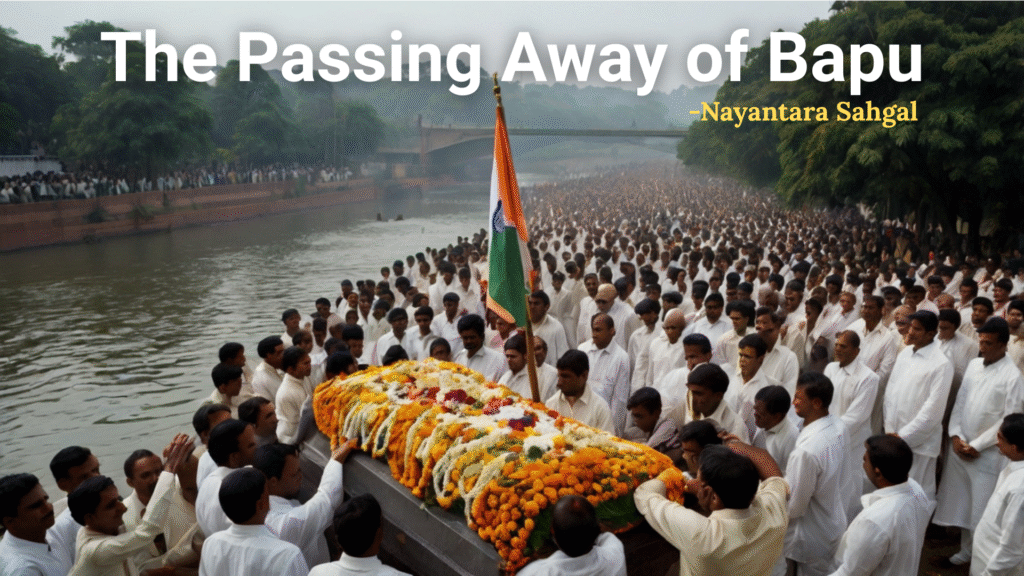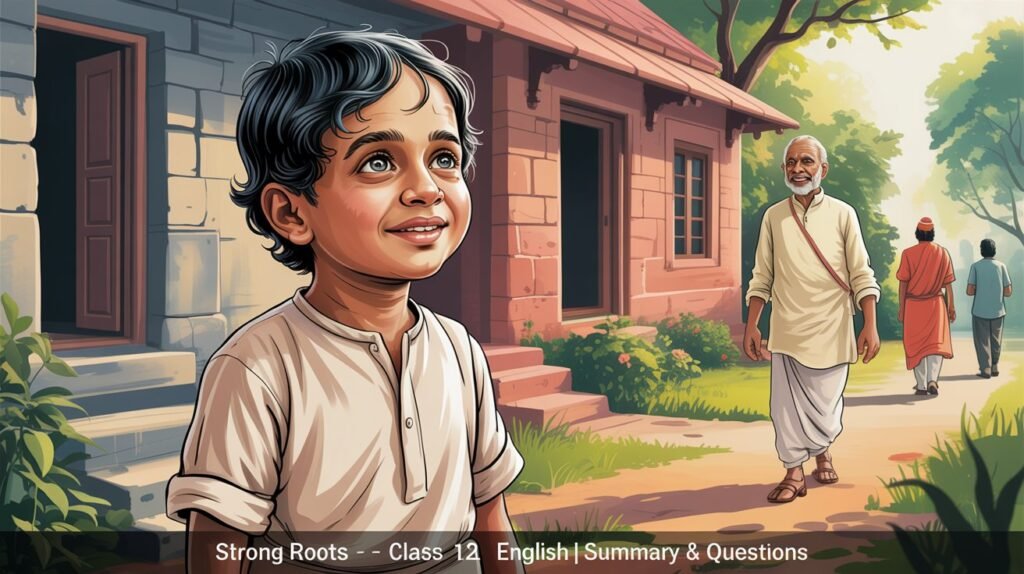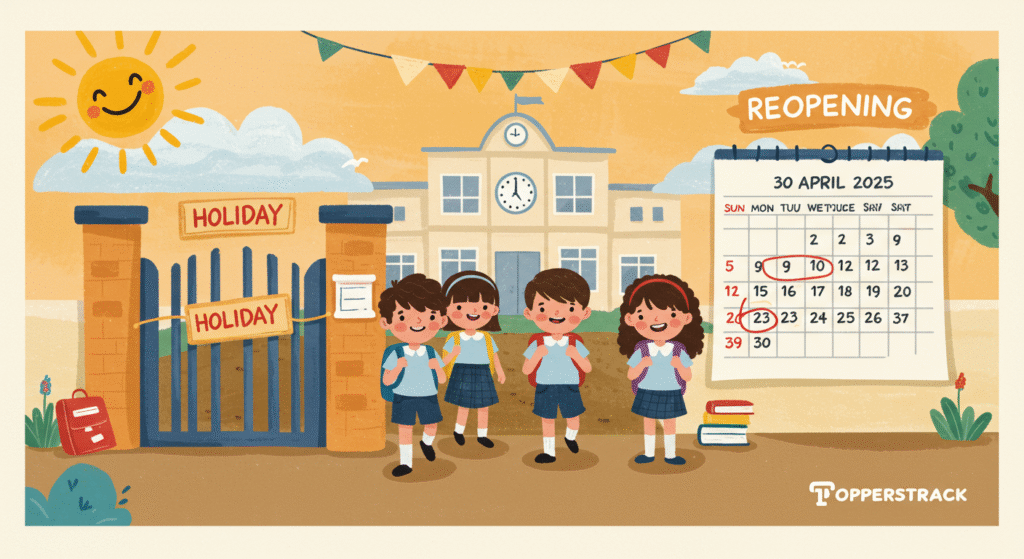
"The Passing Away of Bapu" by Nayantara Sahgal Summary, Question and Answer: Class 10 English Syllabus
"The Passing Away of Bapu" গল্পটি ভারতের জাতির জনক মহাত্মা গান্ধীর মৃত্যুপরবর্তী সময়ে জাতির অনুভূতির এক বাস্তব ও আবেগপূর্ণ চিত্র তুলে ধরে। লেখিকা নায়নতারা সেহগল তাঁর ব্যক্তিগত অভিজ্ঞতার মাধ্যমে গান্ধীর প্রতি জনগণের গভীর ভালোবাসা, শোক এবং তাঁর আদর্শের প্রতি আনুগত্য প্রকাশ করেছেন। এই অধ্যায়টি মাধ্যমিক ইংরেজি পাঠ্যক্রমে রাখা হয়েছে কারণ এটি ছাত্র-ছাত্রীদের শুধু ইতিহাসের এক গুরুত্বপূর্ণ অধ্যায় জানায় না, বরং নৈতিকতা, অহিংসা, আত্মত্যাগ এবং দেশপ্রেমের মতো মূল্যবোধ শেখায়। এটি ভাষা শিক্ষার পাশাপাশি চরিত্র গঠনে সহায়ক।
Summary of "The Passing Away of Bapu" by Nayantara Sahgal: Class 10 English Syllabus
"The Passing Away of Bapu" is a touching story written by Nayantara Sahgal, who was Mahatma Gandhi’s niece. The story describes the deep sadness and shock people felt after Gandhiji's death. The author shares how thousands of people gathered silently during his funeral, showing their love and respect for Bapu. Even though he was no longer with them, people remembered his teachings of truth, non-violence and simplicity.
Nayantara also explains how hard it was to live without Bapu, but his values and ideals gave them strength to move on. The story shows that Gandhi’s spirit lived on in the hearts of the people.
Summary in Bengali of "The Passing Away of Bapu" by Nayantara Sahgal: : Class 10 English Syllabus
"The Passing Away of Bapu" গল্পটি নায়নতারা সেহগল লিখেছেন। তিনি ছিলেন গান্ধীজির আত্মীয়। এই গল্পে তিনি গান্ধীজির মৃত্যুর পর মানুষ কীভাবে দুঃখ পেয়েছিল, সেই কথা বলেছেন। অনেক মানুষ চুপচাপ গান্ধীজির শেষযাত্রায় অংশ নিয়েছিল। সবাই খুব কষ্ট পেয়েছিল, কারণ তাঁরা গান্ধীজিকে খুব ভালোবাসত।
গল্পে বলা হয়েছে, গান্ধীজি মারা গেলেও তাঁর ভালো কথা আর আদর্শ মানুষকে সাহায্য করেছিল। সবাই চেষ্টা করেছিল গান্ধীজির দেখানো সত্য আর অহিংসার পথ ধরে চলতে।
MCQs from The Passing Away of Bapu by Nayantara Sahgal: Class 10 English Syllabus
- Who is referred to as "Bapu" in the story?
(a) Jawaharlal Nehru
(b) Mahatma Gandhi
(c) Subhas Chandra Bose
(d) Bhagat Singh
Answer: (b) Mahatma Gandhi - Who is the author of the essay "The Passing Away of Bapu"?
(a) Rabindranath Tagore
(b) Kamala Das
(c) Nayantara Sahgal
(d) Arundhati Roy
Answer: (c) Nayantara Sahgal - What event does the essay describe?
(a) Gandhi's birth
(b) Gandhi’s funeral
(c) Gandhi's assassination and death
(d) Gandhi's march to Dandi
Answer: (c) Gandhi's assassination and death
"The Passing Away of Bapu" by Nayantara Sahgal Summary, Question and Answer: Class 10 English Syllabus
- In which year was Mahatma Gandhi assassinated?
(a) 1946
(b) 1947
(c) 1948
(d) 1950
Answer: (c) 1948 - Who assassinated Mahatma Gandhi?
(a) Nathuram Godse
(b) Bhagat Singh
(c) Subhas Chandra Bose
(d) Bal Gangadhar Tilak
Answer: (a) Nathuram Godse - What was the main reason for the assassination of Gandhi?
(a) Political rivalry
(b) Religious differences and opposition to Gandhi's views
(c) Financial dispute
(d) Personal hatred
Answer: (b) Religious differences and opposition to Gandhi's views - How did the nation react to Gandhi’s death?
(a) Indifference
(b) Joy
(c) Shock and mourning
(d) Confusion
Answer: (c) Shock and mourning - Where was Gandhi when he was shot?
(a) At his home
(b) At a prayer meeting
(c) At a political rally
(d) At a court hearing
Answer: (b) At a prayer meeting
"The Passing Away of Bapu" by Nayantara Sahgal Summary, Question and Answer: Class 10 English Syllabus
- What was the immediate cause of Gandhi's death?
(a) A bomb blast
(b) A gunshot wound
(c) Natural causes
(d) An accident
Answer: (b) A gunshot wound - Which city was Gandhi in when he was assassinated?
(a) New Delhi
(b) Mumbai
(c) Kolkata
(d) Ahmedabad
Answer: (a) New Delhi - What was Gandhi’s vision for India?
(a) A violent revolution
(b) Non-violence and peace
(c) Foreign rule continuation
(d) Monarchy rule
Answer: (b) Non-violence and peace - Which of these did Gandhi strongly oppose?
(a) British rule
(b) Partition of India
(c) Industrialization
(d) All of the above
Answer: (a) British rule - How is Gandhi’s death described in the essay?
(a) As a sudden tragedy
(b) As a long awaited event
(c) As a joyful occasion
(d) As an unimportant incident
Answer: (a) As a sudden tragedy - What was the mood of the people after Gandhi’s death?
(a) Celebration
(b) Mourning and sadness
(c) Anger and violence
(d) Confusion and chaos
Answer: (b) Mourning and sadness - What is the central theme of the essay?
(a) Celebration of independence
(b) The impact of Gandhi’s death on India
(c) Gandhi’s childhood
(d) Gandhi’s political career
Answer: (b) The impact of Gandhi’s death on India - Nayantara Sahgal was related to which Indian leader?
(a) Mahatma Gandhi
(b) Jawaharlal Nehru
(c) Sardar Patel
(d) Subhas Chandra Bose
Answer: (b) Jawaharlal Nehru - How did Gandhi influence the freedom struggle?
(a) By advocating violence
(b) By promoting non-violent civil disobedience
(c) By remaining silent
(d) By supporting British rule
Answer: (b) By promoting non-violent civil disobedience - What was the reaction of world leaders to Gandhi's death?
(a) They ignored it
(b) They condemned the assassination
(c) They celebrated
(d) They were indifferent
Answer: (b) They condemned the assassination - Gandhi’s death created a void in:
(a) Politics only
(b) Society only
(c) Both politics and society
(d) None of these
Answer: (c) Both politics and society
"The Passing Away of Bapu" by Nayantara Sahgal Summary, Question and Answer: Class 10 English Syllabus
- What does the essay suggest about Gandhi’s legacy?
(a) It ended with his death
(b) It lives on through his teachings
(c) It was forgotten soon
(d) It was limited to a few people
Answer: (b) It lives on through his teachings - Which qualities of Gandhi does the essay highlight?
(a) His courage and non-violence
(b) His wealth and power
(c) His cruelty
(d) His indifference
Answer: (a) His courage and non-violence - What role did Gandhi play in Indian independence?
(a) None
(b) A minor role
(c) A major leadership role
(d) A foreign role
Answer: (c) A major leadership role - How did Gandhi’s death affect the communal harmony?
(a) It worsened the situation
(b) It helped restore peace
(c) It had no effect
(d) It caused riots immediately
Answer: (b) It helped restore peace - Gandhi is often called the:
(a) Father of the Nation
(b) Father of India
(c) King of India
(d) President of India
Answer: (a) Father of the Nation - Which movement was led by Gandhi?
(a) Quit India Movement
(b) Civil Disobedience Movement
(c) Non-Cooperation Movement
(d) All of the above
Answer: (d) All of the above
"The Passing Away of Bapu" by Nayantara Sahgal Summary, Question and Answer: Class 10 English Syllabus
- Gandhi’s philosophy was based on:
(a) Ahimsa (non-violence)
(b) Violence
(c) Terrorism
(d) Aggression
Answer: (a) Ahimsa (non-violence) - Which of these best describes Gandhi’s personality?
(a) Humble and determined
(b) Arrogant and rude
(c) Lazy and careless
(d) Wealthy and arrogant
Answer: (a) Humble and determined - Gandhi’s death was mourned by:
(a) Only Indians
(b) People around the world
(c) Only politicians
(d) Nobody
Answer: (b) People around the world - Gandhi was born in:
(a) Mumbai
(b) Porbandar
(c) Delhi
(d) Kolkata
Answer: (b) Porbandar - What was Gandhi’s profession before joining politics?
(a) Lawyer
(b) Doctor
(c) Engineer
(d) Teacher
Answer: (a) Lawyer - Gandhi believed in:
(a) Truth and non-violence
(b) Wealth and power
(c) Violence and hatred
(d) Silence and fear
Answer: (a) Truth and non-violence - Who was Nathuram Godse?
(a) Gandhi’s supporter
(b) Gandhi’s assassin
(c) A freedom fighter
(d) British officer
Answer: (b) Gandhi’s assassin - The essay describes the nation as being in:
(a) Celebration
(b) Grief and shock
(c) Anger and riots
(d) Confusion
Answer: (b) Grief and shock - Gandhi’s death symbolized:
(a) End of British rule
(b) Loss of peace and unity
(c) Beginning of war
(d) New leadership
Answer: (b) Loss of peace and unity - Which of these movements was NOT led by Gandhi?
(a) Salt March
(b) Civil Disobedience
(c) Quit India Movement
(d) Swadeshi Movement
Answer: (d) Swadeshi Movement
"The Passing Away of Bapu" by Nayantara Sahgal Summary, Question and Answer: Class 10 English Syllabus
- How was Gandhi viewed by the common people?
(a) As a hero and father figure
(b) As a villain
(c) As a foreigner
(d) As irrelevant
Answer: (a) As a hero and father figure - What was Gandhi’s famous prayer meeting called?
(a) Satyagraha
(b) Dharmashala
(c) Katha
(d) None of these
Answer: (a) Satyagraha - Which Indian festival is closely associated with Gandhi?
(a) Diwali
(b) Independence Day
(c) Gandhi Jayanti
(d) Holi
Answer: (c) Gandhi Jayanti - How did Gandhi's death influence Indian politics?
(a) It weakened the freedom struggle
(b) It united the people
(c) It caused division
(d) It had no effect
Answer: (b) It united the people - Gandhi’s method of protest is called:
(a) Violent protest
(b) Civil Disobedience
(c) War
(d) Negotiation only
Answer: (b) Civil Disobedience - What message does the essay convey about peace?
(a) It is fragile and valuable
(b) It is unnecessary
(c) It can be achieved by force
(d) It is impossible
Answer: (a) It is fragile and valuable - Gandhi's attire symbolized:
(a) Simplicity and poverty
(b) Wealth and status
(c) Power and authority
(d) None of these
Answer: (a) Simplicity and poverty - The author of the essay belonged to which generation after independence?
(a) First generation
(b) Second generation
(c) Third generation
(d) Fourth generation
Answer: (b) Second generation - Gandhi’s methods inspired:
(a) Only Indians
(b) Many global leaders
(c) No one
(d) Only Britishers
Answer: (b) Many global leaders - The essay "The Passing Away of Bapu" is mainly:
(a) A historical account
(b) A personal reflection
(c) A scientific report
(d) A fictional story
Answer: (b) A personal reflection - Which of these words best describes the tone of the essay?
(a) Joyful
(b) Sad and reflective
(c) Angry
(d) Humorous
Answer: (b) Sad and reflective
"The Passing Away of Bapu" by Nayantara Sahgal Summary, Question and Answer: Class 10 English Syllabus
- The funeral procession of Gandhi was:
(a) Small and quiet
(b) Large and emotional
(c) Violent
(d) Ignored by people
Answer: (b) Large and emotional - What lesson does the essay teach readers?
(a) The importance of violence
(b) The power of peace and unity
(c) The need for revenge
(d) The value of wealth
Answer: (b) The power of peace and unity - The essay mentions Gandhi’s death as a:
(a) New beginning
(b) National tragedy
(c) Political change
(d) Event of no importance
Answer: (b) National tragedy - What is the lasting impact of Gandhi according to the essay?
(a) Forgotten leader
(b) Eternal symbol of peace
(c) Controversial figure
(d) Short-lived fame
Answer: (b) Eternal symbol of peace
Fill in the Blanks from The Passing Away of Bapu by Nayantara Sahgal: Class 10 English Syllabus
- Bapu is a popular name for __________.
Answer: Mahatma Gandhi - Gandhi was assassinated in the year __________.
Answer: 1948 - Gandhi was shot by __________.
Answer: Nathuram Godse - Gandhi was killed during a __________ meeting.
Answer: prayer - Gandhi is known as the __________ of the Nation.
Answer: Father - The essay "The Passing Away of Bapu" is written by __________.
Answer: Nayantara Sahgal - Gandhi’s philosophy was based on __________ and non-violence.
Answer: truth - Gandhi strongly opposed British __________ in India.
Answer: rule - Gandhi’s death shocked and __________ the entire nation.
Answer: saddened - The assassin was driven by __________ differences and hatred.
Answer: religious - Gandhi’s funeral procession was __________ and emotional.
Answer: large - Gandhi’s teachings inspired many __________ leaders.
Answer: world - Gandhi was born in __________, India.
Answer: Porbandar - Before politics, Gandhi was a __________ by profession.
Answer: lawyer - Gandhi’s method of protest was called __________.
Answer: Satyagraha - Gandhi led the __________ India Movement.
Answer: Quit - Gandhi wore simple __________ to symbolize poverty.
Answer: clothes - Gandhi’s death left a __________ in the hearts of Indians.
Answer: void
"The Passing Away of Bapu" by Nayantara Sahgal Summary, Question and Answer: Class 10 English Syllabus
- The nation mourned Gandhi’s death with deep __________.
Answer: grief - Gandhi’s life was dedicated to __________ and peace.
Answer: non-violence - Gandhi’s assassin was __________ to Gandhi’s ideals.
Answer: opposed - Gandhi’s death occurred in the city of __________.
Answer: New Delhi - Gandhi’s death symbolized the loss of national __________.
Answer: unity - Gandhi’s birthday is celebrated as __________ Jayanti.
Answer: Gandhi - Gandhi’s famous march to protest salt tax was called the __________ March.
Answer: Dandi - Gandhi’s death led to an increase in __________ among communities.
Answer: peace - Gandhi is remembered as a __________ leader.
Answer: great - Gandhi’s principles influenced the global __________ rights movement.
Answer: civil - Gandhi’s death was a great __________ to the country.
Answer: loss - Gandhi believed in solving problems through __________ resistance.
Answer: non-violent - Gandhi's assassin believed Gandhi was harming __________ interests.
Answer: Hindu - Gandhi’s peaceful protests are known as __________.
Answer: civil disobedience - Gandhi was deeply respected by __________ across India.
Answer: people
"The Passing Away of Bapu" by Nayantara Sahgal Summary, Question and Answer: Class 10 English Syllabus
- Gandhi’s death was a __________ moment in India’s history.
Answer: tragic - Gandhi’s principles are taught in schools as examples of __________.
Answer: peace - Gandhi’s life inspired many freedom __________.
Answer: fighters - Gandhi used __________ to bring attention to social issues.
Answer: protests - Gandhi’s death was covered widely in __________.
Answer: newspapers - Gandhi’s philosophy is called __________.
Answer: Ahimsa - Gandhi’s death marked the end of an era of __________.
Answer: peace - Gandhi’s last words emphasized __________ and love.
Answer: forgiveness - Gandhi’s ideals continue to inspire __________ generations.
Answer: future - Gandhi is considered a symbol of __________ resistance.
Answer: non-violent - The nation observed a period of __________ after Gandhi’s death.
Answer: mourning - Gandhi’s teachings helped India gain __________.
Answer: independence - Gandhi’s life is a story of courage and __________.
Answer: sacrifice - Gandhi’s death caused widespread __________ across India.
Answer: sorrow - Gandhi’s birthday is celebrated every year on __________ 2nd.
Answer: October - Gandhi’s assassination took place at Birla __________.
Answer: House - Gandhi’s death united the people in their fight for __________.
Answer: freedom
Short Answer Questions from The Passing Away of Bapu by Nayantara Sahgal: Class 10 English Syllabus
- Who was Mahatma Gandhi?
Answer: Mahatma Gandhi was a great leader of India’s freedom struggle known for his principles of truth and non-violence. - What does the name 'Bapu' mean?
Answer: 'Bapu' means father, a loving title given to Gandhi as the Father of the Nation. - Who wrote the essay 'The Passing Away of Bapu'?
Answer: Nayantara Sahgal wrote the essay.
"The Passing Away of Bapu" by Nayantara Sahgal Summary, Question and Answer: Class 10 English Syllabus
- When was Gandhi assassinated?
Answer: Gandhi was assassinated on January 30, 1948. - Who assassinated Mahatma Gandhi?
Answer: Nathuram Godse assassinated Gandhi. - Where was Gandhi when he was shot?
Answer: Gandhi was shot at a prayer meeting in New Delhi. - What was the reaction of the nation to Gandhi’s death?
Answer: The nation was shocked and deeply saddened, mourning his loss. - What was Gandhi’s philosophy?
Answer: Gandhi’s philosophy was based on truth, non-violence, and peace. - Why was Gandhi assassinated?
Answer: Gandhi was assassinated because some opposed his views on religious tolerance and non-violence. - What impact did Gandhi’s death have on India?
Answer: It created a deep sense of loss but also strengthened the resolve for peace and unity. - How is Gandhi’s legacy remembered today?
Answer: Gandhi’s legacy is remembered through his teachings of peace and non-violence worldwide. - What role did Gandhi play in Indian independence?
Answer: Gandhi led non-violent movements that helped India gain independence from British rule. - Describe the mood of the people after Gandhi’s death.
Answer: People were filled with grief, sadness, and a deep sense of loss. - What was Gandhi’s profession before politics?
Answer: Gandhi was a lawyer. - What is Satyagraha?
Answer: Satyagraha is Gandhi’s method of non-violent resistance. - What was the significance of Gandhi’s funeral procession?
Answer: It showed the nation’s respect and love for Gandhi and marked a moment of national mourning.
"The Passing Away of Bapu" by Nayantara Sahgal Summary, Question and Answer: Class 10 English Syllabus
- How did Gandhi’s death affect communal harmony?
Answer: It initially created tension but eventually helped promote peace among communities. - Why is Gandhi called the Father of the Nation?
Answer: Because of his crucial role in India’s independence and his influence on the nation’s values. - What qualities made Gandhi a great leader?
Answer: His courage, humility, truthfulness, and commitment to non-violence. - What message does Gandhi’s life teach?
Answer: The power of peace, truth, and non-violent resistance. - Where was Gandhi born?
Answer: Gandhi was born in Porbandar, India. - What was the cause of Gandhi’s death?
Answer: He was shot by Nathuram Godse. - How did Gandhi’s death affect Indian politics?
Answer: It united politicians and citizens in continuing his legacy of peace. - What was the Dandi March?
Answer: A famous protest led by Gandhi against the British salt tax. - What kind of clothes did Gandhi wear?
Answer: Simple homespun clothes symbolizing simplicity and self-reliance. - How did Gandhi influence the civil rights movement globally?
Answer: His methods inspired leaders like Martin Luther King Jr. and Nelson Mandela. - What was the immediate impact of Gandhi’s assassination?
Answer: Widespread grief and national mourning. - What does the essay reflect about the nation’s feelings after Gandhi’s death?
Answer: Deep sorrow, loss, and respect for Gandhi’s contributions. - How does Nayantara Sahgal describe Gandhi in the essay?
Answer: As a symbol of peace and a unifying figure for India. - What is the significance of Gandhi’s death anniversary?
Answer: It is observed to remember his teachings and sacrifices. - Why was Gandhi opposed by some groups?
Answer: Because of his stance on non-violence and religious tolerance. - How is Gandhi’s philosophy relevant today?
Answer: It teaches peaceful conflict resolution and the importance of truth.
"The Passing Away of Bapu" by Nayantara Sahgal Summary, Question and Answer: Class 10 English Syllabus
- What was Gandhi’s vision for India’s future?
Answer: A nation based on peace, equality, and justice. - How did Gandhi’s death inspire the nation?
Answer: It motivated people to continue working for peace and unity. - What role did religion play in Gandhi’s life?
Answer: He respected all religions and promoted religious harmony. - What did Gandhi’s assassin believe?
Answer: That Gandhi was harming Hindu interests. - What was Gandhi’s method of protest against the British?
Answer: Non-violent civil disobedience. - How do Indians honor Gandhi today?
Answer: Through celebrations on Gandhi Jayanti and following his teachings. - What lesson does the essay teach about leadership?
Answer: True leadership is based on humility, truth, and service. - How did Gandhi’s life influence India’s constitution?
Answer: His principles inspired its focus on justice and equality. - What is the importance of forgiveness in Gandhi’s teachings?
Answer: Forgiveness is vital to overcome hatred and violence. - How did Gandhi promote self-reliance?
Answer: By encouraging the use of hand-spun cloth (Khadi).
"The Passing Away of Bapu" by Nayantara Sahgal Summary, Question and Answer: Class 10 English Syllabus
- What was the significance of the salt march mentioned in the essay?
Answer: It was a non-violent protest against unjust British laws. - What did Gandhi symbolize for the common people?
Answer: Hope, courage, and moral strength. - How did Gandhi’s death influence the global peace movement?
Answer: It inspired many to adopt non-violent methods. - What was the response of the British government to Gandhi’s assassination?
Answer: They condemned the act and mourned his death. - How is Gandhi remembered in India’s educational curriculum?
Answer: As a key figure in history and a model for moral values. - What role did women play in Gandhi’s movements?
Answer: Women actively participated in protests and social reforms. - What does Nayantara Sahgal want readers to learn from Gandhi’s passing?
Answer: The importance of peace, unity, and continuing his legacy.
🔔 পরবর্তী আপডেট সম্পর্কে গুরুত্বপূর্ণ তথ্য:
এই প্রশ্নোত্তর তালিকায় ভবিষ্যতে যদি আরও নতুন প্রশ্ন যোগ করা হয়, তাহলে তোমরা এখানেই আপডেট পেয়ে যাবে। পাশাপাশি, আমাদের Topperstrack.in অ্যাপ-এর কোর্সে তোমরা পাবে –
✅ সাজেশন, উত্তরপত্র এবং রিভিশন সেট
✅ অধ্যায়ভিত্তিক স্টাডি রিসোর্স
✅ নিয়মিত মক টেস্ট ও কুইজ
🔔 পড়াশোনাকে আরও সহজ ও মজাদার করতে আমাদের সঙ্গেই থাকুন!
✅ এখনই যুক্ত হোন আমাদের 📚 Study Group-এ, যেখানে প্রতিদিন পাবেন গুরুত্বপূর্ণ নোটস, MCQ প্রশ্ন, সাজেশন এবং পরীক্ষা প্রস্তুতির টিপস!
👉 টেলিগ্রাম গ্রুপে যুক্ত হতে ক্লিক করুন:
📲 Join Telegram
👉 হোয়াটসঅ্যাপ চ্যানেলে যুক্ত হতে ক্লিক করুন:
📲 Join WhatsApp Channel
🎯 পড়াশোনা হোক আরও সহজ, গাইডলাইন থাক আমাদের সঙ্গেই!
👥 বন্ধুদের সাথেও শেয়ার করতে ভুলবেন না! 📖✨
💡 এছাড়াও আমাদের অফিসিয়াল ওয়েবসাইট 🌐 Topperstrack.in
এ গেলে তোমরা আরও অনেক বিষয়ভিত্তিক প্রস্তুতি ও শিক্ষনীয় সামগ্রী পাবে!
📱 তাই দেরি না করে এখনই Topperstrack.in অ্যাপ ডাউনলোড করো এবং Topperstrack.in -এ ভিজিট করে নিয়মিত প্র্যাকটিসে থাকো।



